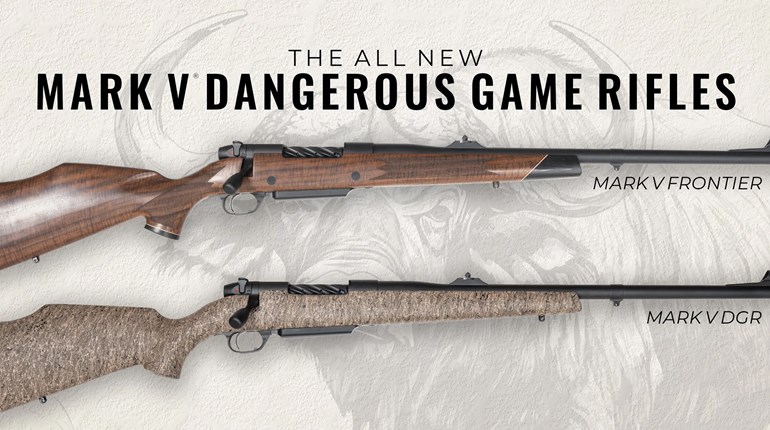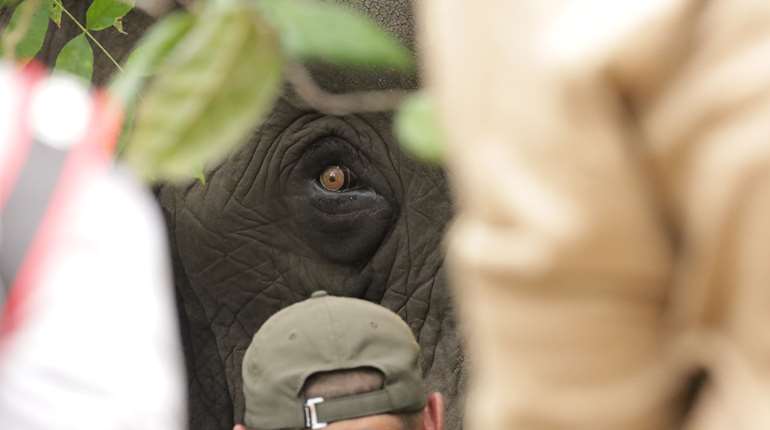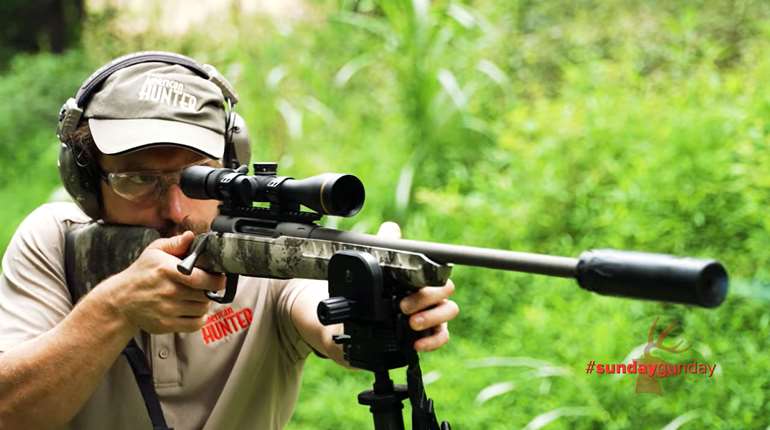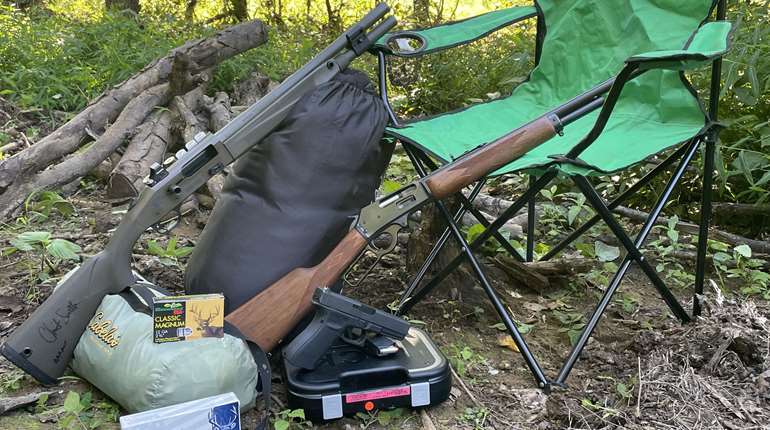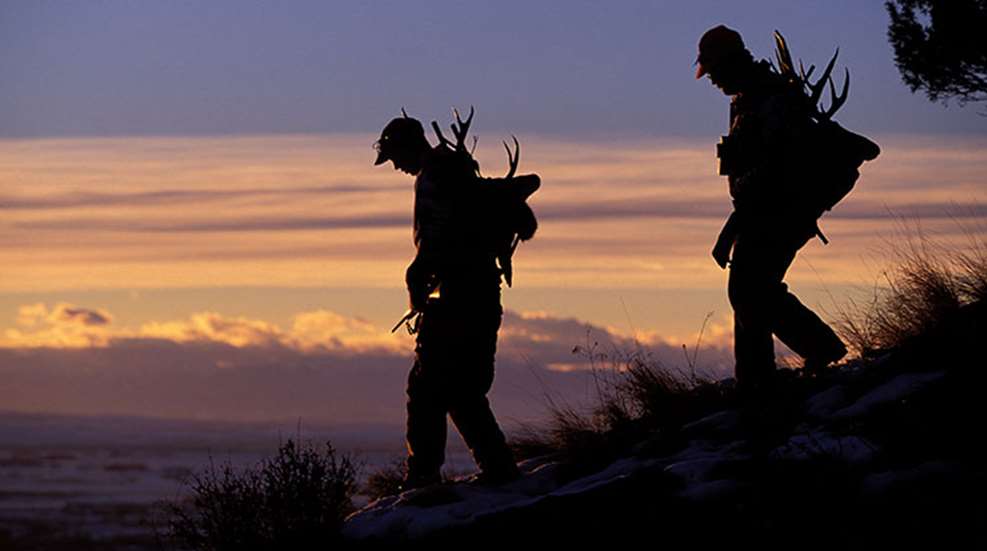
As opening day of Wisconsin’s deer season dawned in 1991, I turned to check on my hunting partner and saw her eyes closed and head slumped, somehow snoozing through the wet, wind-driven snowflakes splattering her young face.
My daughter Leah was then 6. When she awoke a short time later, we shared a hot chocolate as I whispered encouraging words, reminding her that deer hunting is mostly patience and woods-watching. The deer? They feel no obligation to our hopes.
Leah sipped from the thermos cup and nodded, as if assuring me she was fine and didn’t need the pep talk. About an hour later, at roughly 9 a.m., she hissed, “Deer!”
As I turned, she was pointing to a doe and two fawns crossing the pastured creek bottoms 200 yards away. If they had stayed on their northward course they would have remained safe, at least from us. But whitetails are seldom straight-line runners, and the trio veered westward into reach of my 7mm-08.
Minutes later, Leah and I climbed down from my old box stand to tag and dress the doe. Leah then headed for the farmhouse at the field’s far end to warm up and tell our story to my aunt and uncle. When she returned about lunchtime, she brought a fresh thermos and venison-sausage sandwich, as if to verify our status as hunting partners.
Leah and I shared that double-box stand the next few seasons, including the 1997 and 1998 openers when she carried her own rifle but wasn’t ready to hunt alone. Soon enough, in 1999 at age 14, she started hunting from her own stand across the road and over a brushy hilltop. Not coincidentally, that was also when she felt comfortable making that walk alone in darkness.
Though we sat hundreds of yards apart and out of sight, Leah and I remained stalwart hunting partners with many shared memories. When I once again sat alone in my old box stand on opening day of the 2006 season, I thought about deer hunts Leah and I shared the previous 15 years. I thought, too, of deer seasons to come, and wondered if she would be home for any of them.
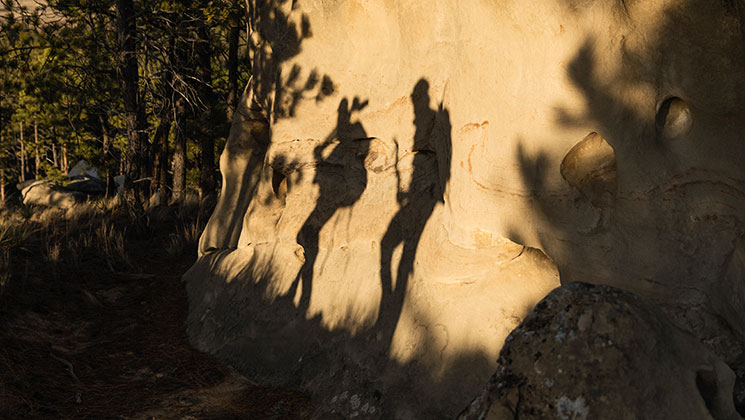
Uncertain Future
I knew my hunting life was about to change, and I didn’t like the uncertainty. Within six months Leah would be a Navy officer, and sent to her first duty station. Would she have enough leave and seniority to come home for deer season and Thanksgiving? And what about the next year or the years after? Would she still be stationed stateside or deployed somewhere I hated to contemplate?
I felt outranked. I was no longer the No. 1 influence on her free time. She was now an adult, which put our hunting partnership onto that same tenuous terrain where work, obligations and other people’s schedules challenge most such unions.
Then again, at least we shared familial commitments, which forge hunting bonds that are tougher to fashion among friends. Father-son, father-daughter, brother-brother and other blood partnerships more readily endure the quarrels, irritations and false assumptions of too much togetherness in tents, trucks and other tight quarters. Granted, failed hunting partnerships don’t necessarily sever the friendship itself, but your partnerships wouldn’t face such tests if you simply preferred golf.
That’s why you treasure hunting partners who stick around, who drag your buck when you need a break and toss you earplugs when you curse their snores. You even cling to them when they’re gone, hoping they still haunt the woods you once shared. You might even believe their ghosts oblige, forever watching Southern oak flats, Northern popple cuts, or Midwestern scrapes and rub lines.
Some hunters even ask favors of them, however sentimental or impossible. I still wonder if one such spirit—Leon Heinze of Portage, Wis.—ever honored Tom Heberlein’s request, made at the World War II veteran’s deathbed a week before he sailed in 2009: “Hey Leon, if it’s not too much trouble, could you send a big buck my way on opening day?”
Given Heinze’s sense of duty, he did as requested. But Heberlein—more a student of people and partridge than of deer and buck rubs—was likely daydreaming and facing the wrong way when Leon’s buck passed by.
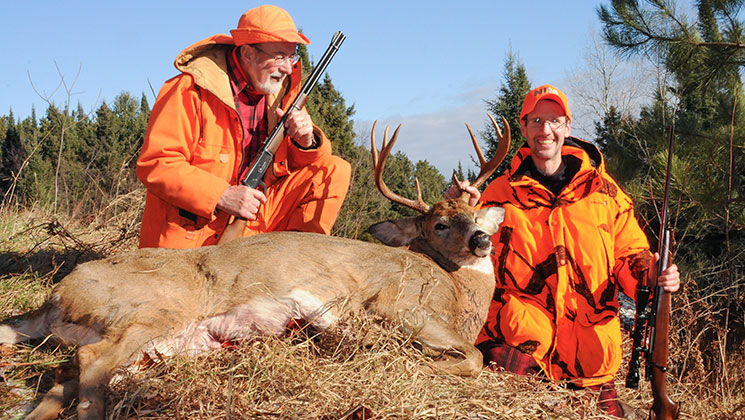
So Why the Declines?
With so much evidence of hunting’s powerful, enduring partnerships and cherished companionship, one wonders how best to explain ongoing declines in hunter numbers across the United States. Maybe the bonds of family and friendship can’t withstand societal forces that shifted the nation’s population from rural to urban areas the past 50 years, which in turn shipped friends and family across the country to chase careers more earnestly than dreams.
And maybe that’s why it’s never been tougher to gather everyone in one place for a four-day weekend or a weeklong stay in deer camp. Make no mistake: Hunting’s ranks are thinning. A scientific estimate of the U.S. hunting population in 1955—the year before my birth—put hunter numbers at 11.8 million, or about 7 percent of the nation’s 165.9 million people. As my generation—baby boomers—swelled hunting’s ranks in the 1960s and ’70s, the hunting population reached 17.1 million by 1975, or about 8 percent of the nation’s 216 million people.
By the time Leah started hunting deer with me in 1991, the U.S. Fish and Wildlife Service estimated the nation’s hunting population at 14.1 million, or 5.5 percent of its 253 million people. Granted, the ’91 estimate and those since used upgraded methods to better calculate participation levels. That suggests earlier estimates were high, but 1991’s data formed a base the FWS still uses when taking hunting’s pulse every five years.
In 2006, the FWS put the U.S. hunting population at 12.5 million, or 4.2 percent of the nation’s 298.4 million people. And in the latest FWS estimates, the agency said 11.5 million people hunted in 2016, or 3.5 percent of U.S. residents 16 and older.
Decline, but No Fall?
But if you follow such reports, you also know even the best calculations can’t pinpoint the actual number of hunters in the United States. Even though 11.5 million people hunted in 2016, not every self-identifying hunter went hunting that year. In fact, many of those “dropouts” resumed hunting in 2017. Likewise, some active hunters didn’t hunt in 2017, but plan to hunt in 2018.
Researchers call that phenomenon “hunter churn,” and they think it largely involves hunting’s more casual participants. By studying recent license-sales data—generated by computers that identify individual hunters and track their annual license purchases from adolescence to the grave—researchers estimate that the actual number of active U.S. hunters is about 33 percent higher than the number who hunt in a given year.
Even when including that extra 33 percent each year, the U.S. hunting population still trends downward, a decline that will continue as baby boomers leave without restocking their ranks. And the descent will eventually level off, but probably not tomorrow. A recent study of Wisconsin’s deer hunting population and the state’s overall demographics predicted hunter numbers wouldn’t stabilize until the 2030s, but that assumes no big changes in deer numbers, access to private and public lands, and other factors affecting our eagerness to hunt.
Meanwhile, many private organizations and state wildlife agencies are working to reinforce hunting’s ranks by offering “learn to hunt” programs to youths and older beginners. Those efforts basically use volunteers to simulate hunting’s longtime reliance on buddies and family to recruit newcomers and give them basic training. But converting massive numbers of newbies into lifelong hunters still requires a vast informal, naturally occurring network of pals and family that agency programs can only supplement, not replace.
Creating such bonds isn’t easy, after all, and yet they remain the key to hunting participation. When Mark Duda’s Responsive Management team studied former hunters in New Hampshire in 2004, they found most hunting partners were either friends (48 percent) or family (43 percent).
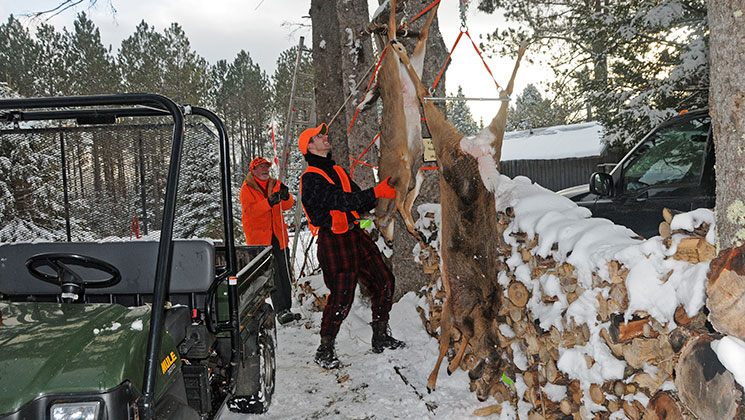
Hunting for Companionship
That’s probably why many hunters quit when their hunting buddy dies, moves or just fades away. A recent Wisconsin study, for instance, found 16 percent of hunting’s dropouts said they quit because one or more of their hunting partners stopped hunting.
Likewise, a 2008 study by Responsive Management called “The Future of Hunting and the Shooting Sports” found that solo hunting was often cited as a source of dissatisfaction. The percentage of respondents who listed “no one to go with” to explain their dissatisfaction more than doubled from 1995 to 2007 among active hunters (4 percent to 9 percent). That explanation was also cited by 10 percent of inactive hunters and 7 percent of non-hunters in 2007 as a strong reason they didn’t hunt.
Removing that obstacle to hunting seems simple enough. In many cases, newbies and casual hunters just need to be asked. Duda’s 2008 study found that invitations from friends to hunt, and requests from children to take them hunting, are two scenarios likely to make someone at least consider hunting. Among active hunters, 36 percent said they would definitely go if invited by a friend, while 57 percent said they’d probably go. Among inactive hunters, 10 percent said they would definitely go if invited by a friend, while 23 percent said they would probably go.
In other words, if you one day visit a dying friend and ask why he didn’t join you in deer camp or the duck blind in recent years, brace yourself for long-term regrets if he answers, “You never asked.” In hunting, it’s best to extend the invitation than to wait for the request.
Besides, is it really that hard for hunters to invite friends and former hunting partners to stomp a few brush piles for bunnies, or push a few woodlots for late-season deer? It’s the little things that sustain relationships.
Strong Foundations
It’s not too late to start. Hunter numbers are down, but the strength of those numbers remains solid among families and friends. Whenever I need such reminders, I recall the nearly 20-year run in which I had a live-in hunting and fishing partner. Leah rose whenever the alarm sounded, and she knew which slots in the vault held my rifle and hers when we returned.
During those two decades we shared small boats, ATV seats, goose blinds and deer stands, as well as tents, campers, motel beds and McDonald’s meals. Leah also learned how to dress in cold, dark tents; and use ear plugs—real ones for sleeping, and imaginary ones for my temper and cheap advice.
She also learned that modesty has its limits when you’re hunting. When Leah was 15, we hunted pronghorns in eastern Colorado. One afternoon, we followed a buck over a mile across the prairie while hiding behind yucca plants, and crawling through sand burs and ground cactus. Finally, the pronghorn stepped into the clear 200 yards away. Leah sat, propped up her rifle, aimed and killed the buck cleanly.
After many hugs and high-fives, she winced and started limping. I asked what was wrong. She said, “When I sat down to shoot, I sat on a cactus. The spines are stuck in my butt.”
Now, I can clean fish and cut up deer, but that doesn’t make me a surgeon. And I might have changed Leah’s diapers 1,000 times and given her a bath 200 times when she was small, but that means nothing to a 15-year-old girl. So, I just said: “Let me know how I can help.”
By the time we returned to our motel room, Leah had a plan. As she walked to the bathroom, she said, “Stand over there and don’t turn around till I say so.” When I turned around minutes later, I saw Leah had turned the motel bed into an operating table, and carefully placed a motel towel to spare her dignity but reveal the cactus spines. She then handed me a tweezers and some antiseptic, and I figured out the rest.
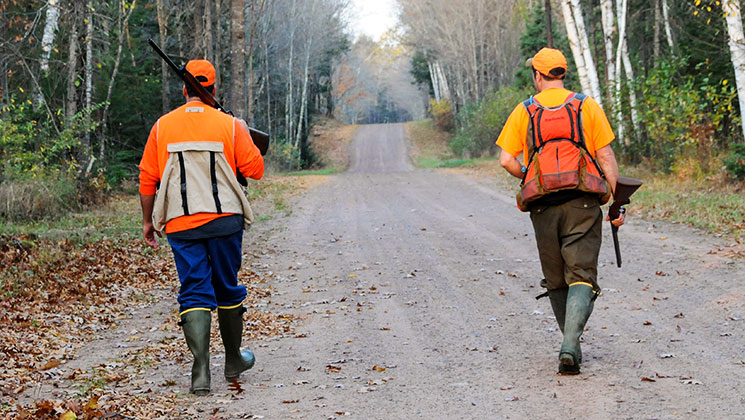
Remember What Matters
A few years later, as opening day of Wisconsin’s 2006 deer season started waning, I did something once unthinkable: I descended from my stand, leaving behind my best chance for late-day action. From there I walked to a ridgeline knoll a few hundred yards closer to Leah for daylight’s final 90 minutes. As the sun set, leaves rustled nearby, but my ears assured me it wasn’t a deer. A opossum waddled into view 50 yards away, its white face pointing northeast, its rattail southwest.
Moments later a rifle blast from Leah’s stand startled me, and I turned on my walkie-talkie. I soon heard her excited voice. She had shot a doe. She said it was lying dead 30 yards from her tripod stand. I was on my way. Leah climbed down as I approached, and we exchanged a congratulatory hug before walking over to tag her doe, take photos and field-dress the sleek creature.
Our rituals completed, I knelt to reassemble my gear and repack. The woods were now dark. My headlamp illuminated a forearm-sized aspen 10 feet away. Its bark was scarred, having been rubbed recently by a buck’s antlers. My headlamp revealed several other aspens whose creamy bark bore dark scars from previous years’ rubs, but these scars were now nearly healed, covering the wood beneath.
We all leave our marks, I guess, but time and nature’s work is never done. Eventually the marks of bucks and men disappear, reclaimed by a woods they once thought was theirs forever. And hunting still endures, woven as it is through the forests, wildlife and companionships that replace them.












